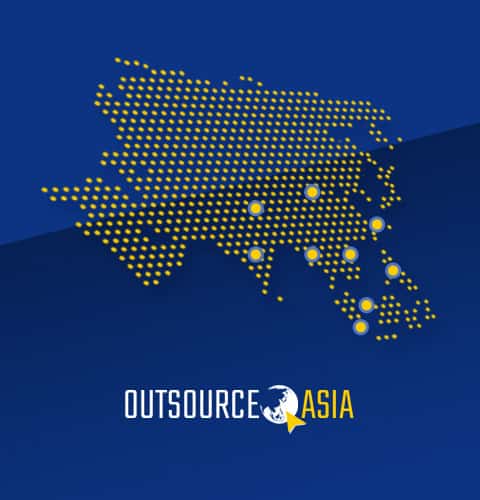
The Future of Work in Taiwan
This article on the future of work in Taiwan examines aspects of the post-pandemic era, ranging from the overall status of the local labor market up to the long-term influence on consumer consumption and business recovery. See how organizations respond towards the impact of automation and technology on job availability and employment growth in the new normal. There is also assessment on commitment to gender equality, diversity, and inclusion as well as decisions by policymakers and business leaders on aspects of cybersecurity management and data and privacy protection.
Status of Local Labor Market
The Directorate General of Budget, Accounting, and Statistics (DGBAS) revealed that Taiwan’s unemployment rate fell for the sixth consecutive month in December 2021 as economic activity improved. The unemployment rate declined 0.02% from a month earlier to 3.64%, following a 0.17 percentage point drop in November. However, after seasonal adjustments, the December unemployment rate was 3.72%, up 0.01% from the previous month. The number of people who lost their jobs fell 3,000 (or 0.66%) from a month earlier to 433,000 in December, while the number of people employed increased 3,000 (or 0.03%) to 11.48 million, with the labor participation rate rising 0.05% to 59.16%.
As the spread of COVID-19 slowed, the number of people who lost their employment due to business downsizing or closures decreased by 2,000 from a month earlier. Taiwan’s unemployment rate averaged 3.95% in 2021, up 0.10% from the previous year. This is due to a domestically transmitted COVID-19 outbreak in mid-May which impacted the local job market, with the number of unemployed averaging 471,000 monthly, down 11,000 (or 2.39%) from the previous year. The labor participation rate in 2021 averaged 59.02%, down 0.12% from the previous year.
Consumer Consumption and Business Recovery
Household spending rose 1.6% during Q4 2021, contrasting Q3’s 5.6% contraction. The rebound was aided by the rollout of the government’s stimulus voucher scheme worth $7.22 billion, as well as a tightening labor market and the vaccine rollout. Public spending, meanwhile, accelerated to a 5.1% expansion in Q4 while gross capital formation surged 13.9% likely aided by strong investment in the chip industry. According to an initial prediction by Academia Sinica, a Taipei-based research institute, the triple stimulus vouchers will contribute to 0.08% growth in Taiwan’s overall economy. In the end, the triple stimulus vouchers increased Taiwan’s GDP by 0.53%.
“Despite the rebound in private consumption in Q4 2021, it has continued to lag the recovery in exports and investments and was coming on the back of a low comparison base, said Ho Woei Chen, economist at United Overseas Bank. “We still see significant risks to private consumption recovery this year given Taiwan’s zero-Covid strategy. Meanwhile, sustained global chips demand and the strong investments in machinery continue to underpin Taiwan’s manufacturing and exports outlook in 2022 but a high base will limit the growth. We are maintaining our growth forecast for Taiwan’s GDP at 3.9% this year.”
Taiwan experienced moderate growth in Q3 2021 with a 3.8% GDP increase year over year, compared to 7.4 percent in Q2 2021. Semiconductor chips contributed the most as semiconductor factory investment increased by 27.97% year over year. Taiwan controls a whopping 63% of the worldwide semiconductor business, according to market research firm TrendForce. In 2021, Taiwan Semiconductor Manufacturing Co. (TSMC), the country’s largest chipmaker, accounted for 54% of global revenue in the semiconductor foundry category. In 2022, the annual growth rates of semiconductor chips in terms of manufacturing and exports may slow due to production capacity restrictions.
Taiwan’s exports benefited from the recovery of traditional commodities related with the global economy in the second half of 2021. Taiwan’s manufacturing activity were mainly untouched by COVID-19, with the exception of a few enterprises that temporarily halted operations due to the island’s summer epidemic. Exports of goods and services are expected to expand at an 18% annual rate in 2021.
Another significant growth driver for 2021 is capital investment, with DGBAS forecasting a nearly 12% increase in real private fixed capital formation. This development was fueled by the 5G infrastructure buildout, the flourishing offshore wind sector, and the increased fleet capacity of airline and container shipping businesses, in addition to rising investment due to rising demand for semiconductors and reshoring of overseas Taiwanese companies.
Impact of Automation and Technology to Job Availability
McKinsey reports that by 2030, 75 million to 375 million workers (3 to 14 % of the global workforce) will need to switch occupational categories as a result of various forms of automation, including AI and robotics, and that 60% of occupations have at least 30% of constituent work activities that could be automated. On the other hand, The Global Future of Work Survey revealed that nearly half of employers in the Asia-Pacific region expect to need fewer employees by 2020, while respondents reported that 12% of work is currently being done using AI and robotics, compared to only 7% three years ago, and they anticipate that this figure will rise to 22% in the next three years.
In preparation for various workforce displacement issues and business disruptions due to automation and technology, Taiwan has already launched its $9.7 million worth Artificial Intelligence Talent Cultivation Program in 2019. The initiative concentrates on strengthening industry-academic collaboration and developing Problem-Based Learning education platforms that will help eliminate the mismatch between graduates and companies. Outside the higher education system, the government is also upskilling and reskilling workers with knowledge about AI and machine learning. The ultimate goal is to lift economic growth by bringing in people with professional skills or domain know-how to learn AI and bring it back to their industry to increase competitiveness.
Commitment to Gender Equality, Diversity, and Inclusion
In 2016, female workers earned 14.6% less than their male counterparts. But that was a big hurdle to overcome considering that in the past 30 years, the salary gap between male and female workers is 33%. Today, Taiwan ranks first in Asia and sixth in the world for gender equality, according to a self-assessment published on Tuesday by the Executive Yuan’s Gender Equality Committee. The government takes pride in achieving gender equality with the election of a female president and female legislators who focus on tackling gender-based violence and prejudice. Supporting working mothers, ensuring equal worker rights, and providing equal access to education, business training, and loans are some more strategies to reduce gender disparity in Taiwan.
“We have a very strong labor protection policy compared with other Asian countries. One is for laborers and the other is for women, but there is always a debate,” said Connie Chang of the National Development Council’s Department of Overall Planning (DoP). But there was still more to accomplish as forms of discrimination still exists – such as mistreatment or unfair treatment over pregnancy and child rearing, she explained. Moreover, 8% of women in the country do not return to their jobs after parental leave.
Cybersecurity Management and Data and Privacy Protection
Acer, a Taiwanese electronic gear company, was reportedly the victim of a ransomware attack in March 2021 by a hacking gang known as REvil. It sought $50 million from Acer and uploaded screenshots of hacked bank records and confidential information on its dark web-based data leaks blog, the highest amount ever asked in a such attack anywhere. According to reports, Acer attempted to bargain with REvil and offered a cheaper price, which the hackers turned down.
Quanta, Apple’s main Taiwanese MacBook supplier, became REvil’s second Taiwanese ransomware target a month later. REvil allegedly wanted $50 million from Quanta to retrieve 21 screenshots of allegedly stolen MacBook schematics. Neither Quanta nor Apple paid the ransom by the deadline REvil set, and the organization began publishing the files after that.
According to IBM, more than 60% of companies hit by ransomware opt to pay the ransom, which can range from thousands to millions of dollars. However, ransomware can cause far more harm to enterprises than just financial losses, including a negative influence on a company’s reputation.
As Taiwan advances in a variety of high-tech industries and has an irreplaceable role in the global high-tech supply chain, cybersecurity becomes increasingly vital. However, Taiwan has been disappointingly underprepared for operational technology (OT) related cyber threats. According to an IBM survey, around 81% of attacked companies did not have OT-specific incident-response plans, despite a 2000% increase in OT-related security incidents in 2019.
To complement Taiwan’s breakthroughs in ICT, AIoT, and semiconductor technologies, the Tsai government prioritized cybersecurity as a major component of its Six Core Strategic Industries strategy in 2020. Still, a culture of accountability is noticeably absent from both its public and private sectors. Cybersecurity been treated as an afterthought by many Taiwanese companies, while building customer trust based on a strong cyber defense is not an ingrained concept for these companies.
Learn more about how Outsource Asia can help your organization embrace the future of work.

